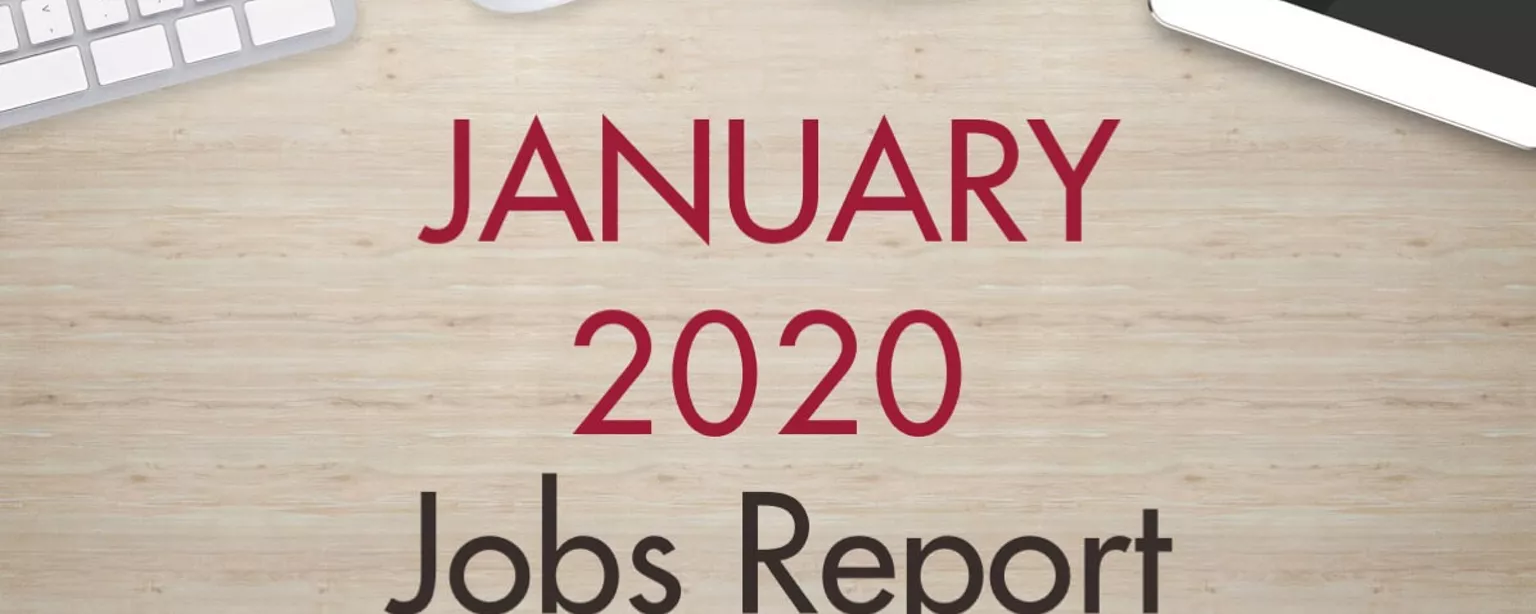Employers added 225,000 jobs in January 2020, according to the Bureau of Labor Statistics (BLS).
New job creation in November and December 2019 was also higher than previously reported — by 7,000 positions. After revisions, job gains have averaged 211,000 over the last three months.
The following sectors saw the largest gains in employment last month, according to the BLS:
- Education and health services: 72,000 jobs added
- Construction: 44,000 jobs added
- Leisure and hospitality: 36,000 jobs added
- Transportation and warehousing: 28,300 jobs added
- Professional and business services: 21,000 jobs added
Unemployment rate ticks up slightly to 3.6%
The unemployment rate for January rose to 3.6%, up slightly from 3.5% the month before.
The unemployment rate for college-degreed workers who are 25 or older also increased slightly to 2.0%, from 1.9% in December. These workers are in highest demand by employers.
Many in-demand roles have even lower unemployment rates, other BLS data show. Examples include accountants and auditors (1.4%), software developers (1.5%), and paralegals and legal assistants (1.8%).
What employers need to know
In this challenging market, many employers are considering hiring promising candidates who may not meet all the requirements of the position. In fact, a Robert Half survey found that 84% of employers are open to hiring professionals who lack the required skills for a role.
Training new hires is often a better plan than waiting for a candidate who matches your exact hiring criteria. You’ll want to consider the following questions as you decide how to adjust your hiring requirements:
- What qualifications are absolutely essential for the job? This list should be fairly short. And don’t focus only on technical skills. Keep interpersonal abilities in mind, too, as they can impact your candidate’s ability to thrive in your workplace culture.
- What skills can a candidate learn on the job or with training? Also, importantly: How quickly can that person be trained? If the new hire could ramp up in a matter of weeks by shadowing current staff or engaging in some e-learning, that’s a big plus.
- What skills and abilities are nice-to-haves? This list might include an in-demand certification or experience with a software program that isn’t vital to the job but could add value to your organization overall. These “bonuses” could also help you decide between two similarly qualified candidates.
For more tips on assessing candidates’ skills, experience and organizational fit, including for specific roles, visit the Evaluating Job Candidates section of the Robert Half blog.
What job seekers need to know
At many companies, the door is open to candidates who can make the case that they’ll be a solid hire, even if they don’t have all the desired skills and experience for the job. Record-low unemployment and rising business demands have prompted many employers to be more flexible with their hiring criteria. In a survey by our company, nearly two-thirds (62%) of workers said they’d been offered a position even though they didn’t meet all the job requirements.
The requirements that employers are likely to relax won’t be core to performing the job and can be learned relatively quickly with some additional training and onboarding time. So, before going into the interview, you’ll want to review the job description again and think about what skills or knowledge gaps you might need to discuss with a hiring manager.
Also, be ready to emphasize your strengths when the hiring manager asks you a question like, “Tell me about yourself.” A well-prepared elevator pitch will allow you to explain what you can bring to the job, why you want the position, and how, in the past, you’ve taken on new challenges and added value. You might also want to highlight abilities you have that may not be required for the role but which the employer might value — for example, project management or coding skills.
More than half (53%) of hiring managers responding to a recent Robert Half survey said they’re willing to be flexible about professional development and training reimbursement when negotiating with job candidates. So, if you’re able to make a strong case for why you’d be a great hire, there’s a good chance an employer will consider investing in making the most of your potential.
Find out how to answer the interview question, “Tell me about yourself.”
JANUARY 2020 U.S. BUREAU OF LABOR STATISTICS MONTHLY JOBS SUMMARY
225,000 JOBS ADDED*
3.6% UNEMPLOYMENT RATE*
2.0% UNEMPLOYMENT RATE UNEMPLOYMENT RATE FOR COLLEGE GRADS*/**
UNEMPLOYMENT RATE OVER THE PAST 12 MONTHS*
| Unemployment Rate | Unemployment Rate for College Grads | ||
|---|---|---|---|
| February '19 | 3.8% | 2.2% | |
| March '19 | 3.8% | 2.0% | |
| April '19 | 3.6% | 2.1% | |
| May '19 | 3.6% | 2.1% | |
| June '19 | 3.7% | 2.1% | |
| July '19 | 3.7% | 2.2% | |
| August '19 | 3.7% | 2.1% | |
| September '19 | 3.5% | 2.0% | |
| October '19 | 3.6% | 2.1% | |
| November '19 | 3.5% | 2.0% | |
| December '19 | 3.5% | 1.9% | |
| January '20 | 3.6% | 2.0% |
*Source: Bureau of Labor Statistics
**College-degreed workers 25 and older
See what these results mean for job seekers and employers at roberthalf.com/blog.
EMPLOYERS FLEX ON HIRING REQUIREMENTS
62% of workers have been offered a job when they didn’t meet all the requirements.
Source: Robert Half survey of more than 2,800 workers in the U.S.
© 2020 Robert Half. An Equal Opportunity Employer M/F/Disability/Veterans.
roberthalf.com






